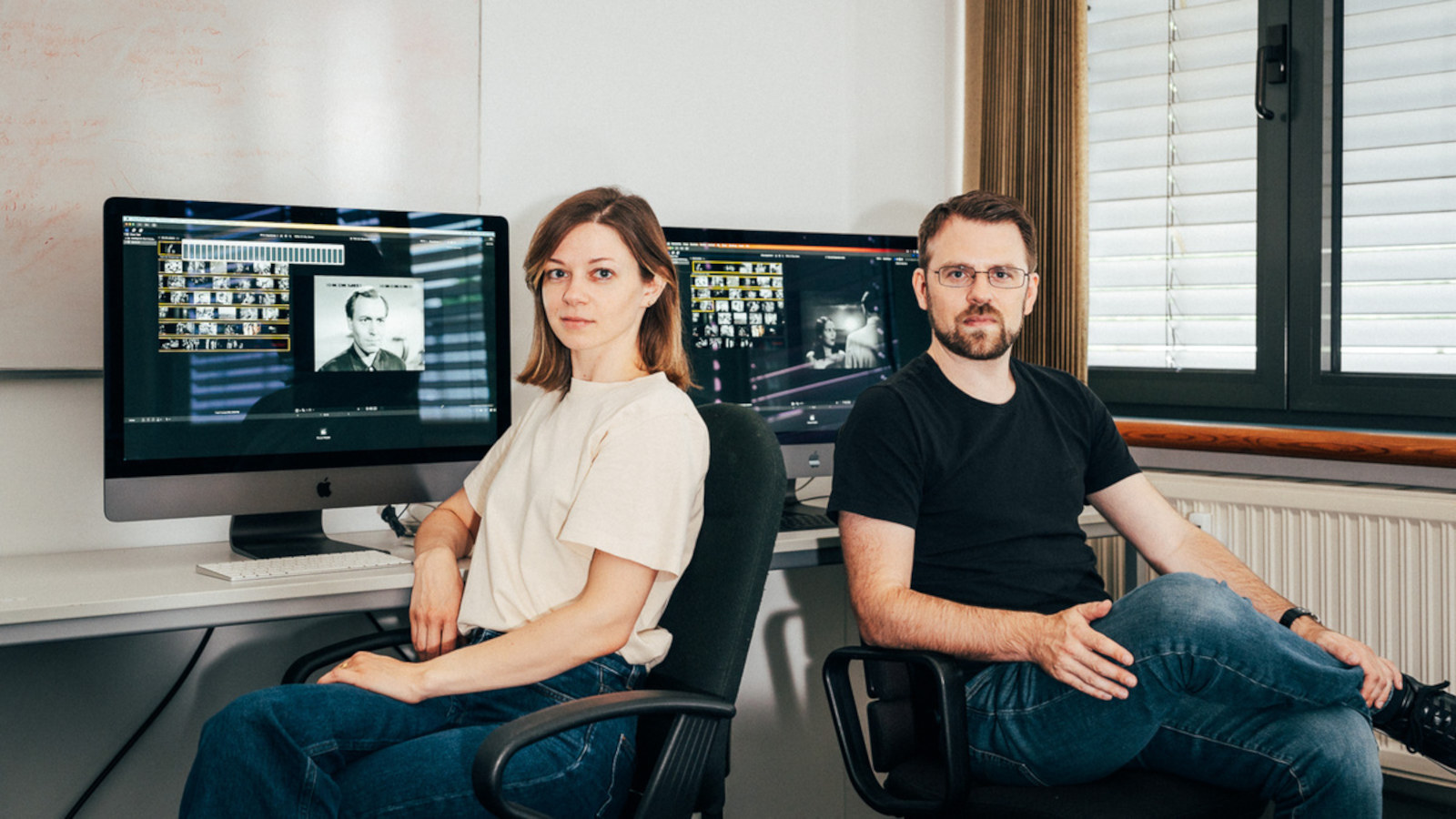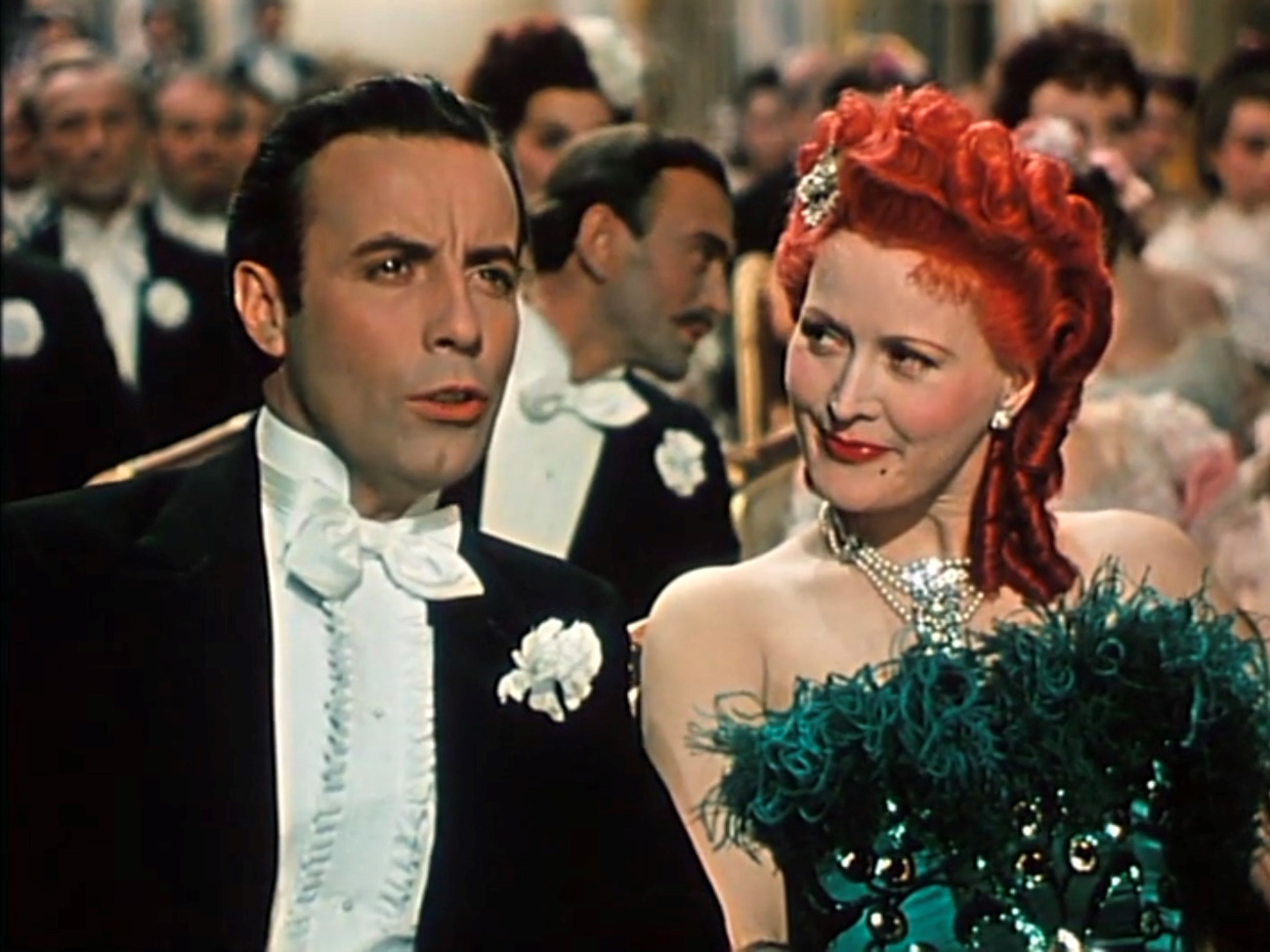
© Lukas Klose / Universität Bremen
Transitions between National Socialism and the Post-War Period
Researchers examine a previously little-noticed piece of film history
More than 1,200 films were made in Germany during the National Socialist era. But some of them could not be completed or premiered and only appeared in cinemas after the end of the war. Researchers at the Centre for Media, Communication and Information Research (ZeMKI) are studying these so-called transitional films. They want to know: Why did the films remain unfinished? To what extent can National Socialist propaganda be found in them? And what happened to them in the post-war period?
“So far, the transitional films have hardly been researched,” says adjunct lecturer Dr. Rasmus Greiner, a researcher in film studies. Together with Tatiana Astafeva, research assistant at ZeMKI, he has been working on a research project on the topic for two years. The two see one reason for the research gap in the genre of the films: About half of the roughly 60 transitional films are comedies with titles like “Haunted Castle,” “Ride to Happiness,” or “A Heart Beats for You.” Among film scholars, these films have long been dismissed as apolitical and escapist – in contrast to propaganda films like “Jud Süß” or “Kolberg.” But after individual film scholars such as Karsten Witte and Steven Lowry also began to examine entertainment films under National Socialism in the mid-1990s, these assumptions began to crumble.
The extent to which such comedies also contain elements of propaganda is a question that Rasmus Greiner and Tatiana Astafeva address. In addition, they also explore how Allied censorship officials dealt with the films. Were they edited afterwards, censored, or shown unchanged? And how were they received by post-war audiences? In order to find answers to these questions, the researchers from Bremen examined all the films in the Federal Archive and at the Friedrich Wilhelm Murnau Foundation. They also examined film reviews, film posters, censorship cards, and correspondence between producers, directors, actors, and censorship authorities. They received funding for their project from the German Research Foundation (DFG).

© Friedrich-Wilhelm-Murnau Stiftung, Wiesbaden (Die Fledermaus, 1945, Regie: Géza von Bolváry, Drehbuch: Ernst Marischka)
Why Films Remained Unfinished
During their research, the two scholars found that most of the transitional comedies were nearly finished before the end of the war. “We assume in many cases that there was a policy of stalling for time in order to save people involved in the filming from being deployed to the front,” says Tatiana Astafeva. In the Federal Archives, for example, she found a letter written by a filmmaker of the operetta film “Die Fledermaus” to the Reich Film Minister. In it he wrote that the film’s music producers should be deemed indispensable – even though the music production was almost finished.
Rasmus Greiner and Tatiana Astafeva can only speculate about why films that were already finished were not screened before the end of the war. For example, in the case of the film “How Do We Tell Our Children,” which was shot in Dresden in 1944. When the film was finished, the city was in ruins. “Here we suspect that the Nazi authorities delayed the screening so as not to draw additional attention to the extent of the destruction,” says Rasmus Greiner.
Comedies Were Also a Testimony to the War
“Most of the transitional comedies were made with the aim of distracting the population from the events of the war and keeping them quiet,” Rasmus Greiner explains. “Goebbels already pointed out the distracting, escapist function of the entertainment film, which they did not want to undermine, in his speech at Hotel Kaiserhof on March 28, 1933.” Nevertheless, the two researchers observed that the everyday life of war is openly addressed in many films. For example, in “Vier Treppen rechts” (Four Stairs to the Right), the protagonists Marianne Müller and Dr. Jürgen Wenter, who are unknown to each other, are both looking for an apartment. When a landlord only wants to rent to married couples, they pretend to be married without further ado. “The plot may seem trivial at first glance, but it addresses the housing shortage caused by bombing,” says Tatiana Astafeva.
Families shattered by the war are also visible in the films, such as in “How Do We Tell Our Children.” In the course of the plot, it becomes clear that the two single main characters have become single as a result of the war and under the influence of Nazi norms. Rasmus Greiner, however, is not surprised that such references occur in films that are actually escapist. He points to the research of U.S. communication scholar Stephen Lowry for an explanation. “Lowry emphasized that Nazi propaganda in the comedies did not consist of staging a parallel world far removed from the everyday life of the population,” he says. “National Socialist ideology was only able to be effective in that it addressed the concerns and hardships of the audience.”
Research Findings as Video Essay
By tying the films to wartime events, they were also relatable after the war, as many problems, such as broken families or housing shortages, remained for the time being. Accordingly, most of the films were cleared by Allied censorship officials. “The Allies usually only paid attention to obvious symbols such as swastikas or anti-Semitic statements when it came to classifying a film as propaganda,” explains Tatiana Astafeva. “Moreover, the transitional films were a welcome source of income for production companies in order to finance new films.”
Rasmus Greiner and Tatiana Astafeva have now completed their archival research and are currently working to bundle their research findings into a book. They have already produced a video essay about their research with excerpts from almost all of the transitional comedies. With said video essay, they want to close a gap in several respects. Many transitional films have not yet been digitized or made available outside the archives. Others are available on DVD, but often without critical historical classification. It is therefore important to Greiner and Astafeva that their research is not only received in specialist circles. “With the video essay, we want to make our research findings accessible to a broad public,” says Rasmus Greiner.